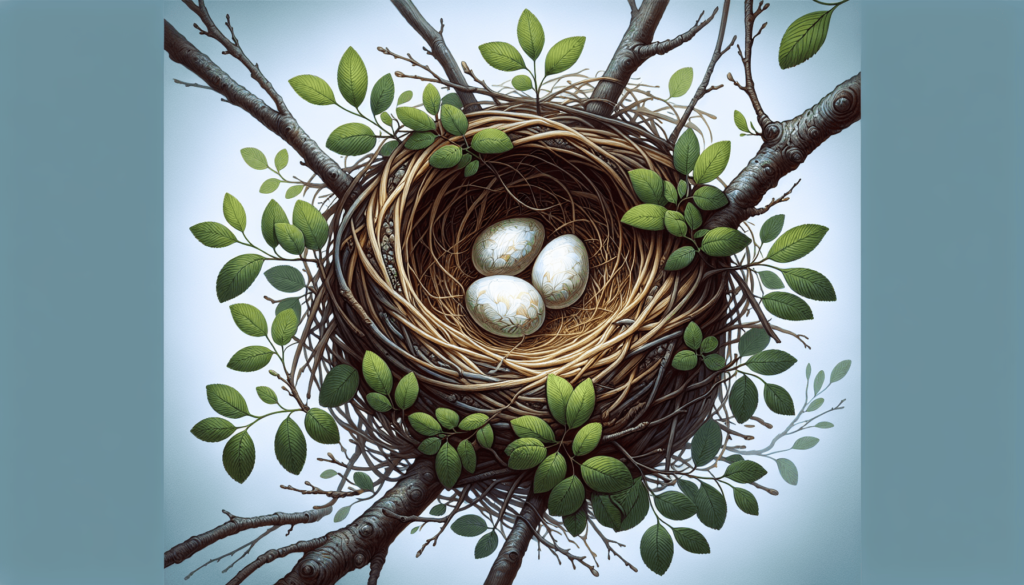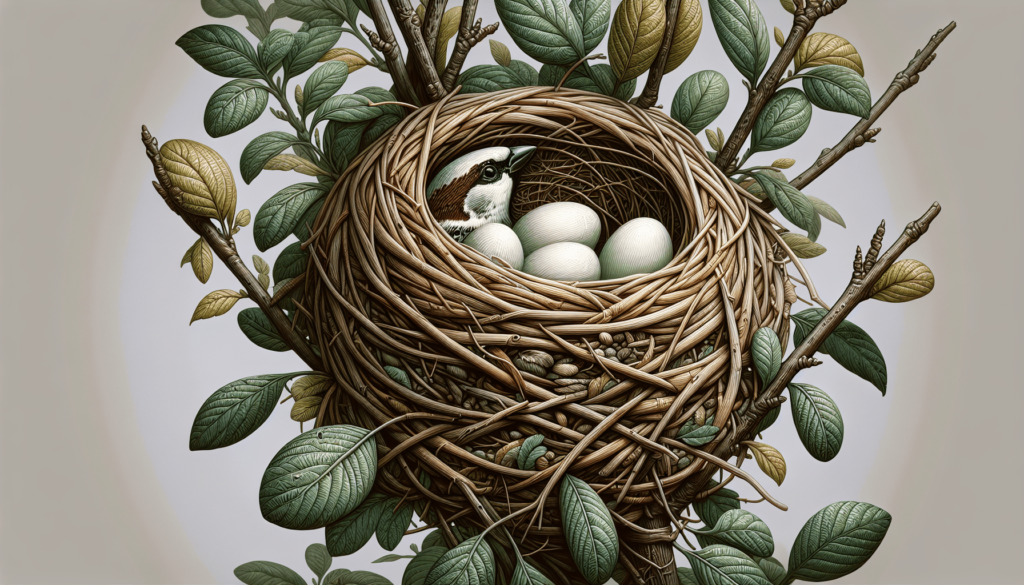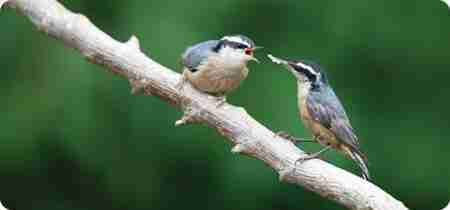Understanding Sparrow Nesting Habits” unravels the intriguing world of sparrows and their nesting behaviors. In this captivating exploration, we’ll delve into the diverse locations sparrows choose for nesting, the materials they prefer, and the seasonal timing of their nesting activities. Plus, we’ll touch on how environmental factors influence their habits. By the end of our journey, we’ll have a richer appreciation for these small but fascinating creatures. Let’s dive in and discover the intricate details that make sparrow nesting unique. Don’t forget to share your own observations and help us spread awareness about the charming lives of sparrows. Have you ever wondered about the intricate details of sparrow nesting habits and why these little birds fascinate so many birdwatchers? Let’s dive into the world of sparrows and their incredible nesting behaviors.
- Understand the different types of sparrows
- Learn about their habitat preferences
- Explore the materials they use for nesting
- Discover their nesting timelines and breeding cycles
- Recognize the threats to sparrow nests and how to help
- Engage with activities to protect and observe them
Understanding and supporting sparrow nesting habits is an enriching experience that benefits both the birds and our environments. By fostering safer habitats and engaging with conservation efforts, we help ensure that these charming creatures continue to brighten our lives with their presence. Why not set up a bird feeder in your garden or join a local birdwatching group today? Your small actions can make a significant difference!
Let’s commit to creating a world where sparrows, with their charming nests and lively chirps, can thrive as they’ve for centuries. Together, we can make our surroundings welcoming for these delightful birds and enjoy the beauty they bring to our daily lives.
Understanding Sparrow Nesting Habits
Sparrows are small, unobtrusive birds that have found a special spot in many of our hearts. Despite their familiar presence, there is a lot that goes on behind the scenes in their nesting behaviors that we might not be aware of. In this article, we’ll explore every nook and cranny of sparrow nesting habits, from their habitat preferences to the materials they use and the threats they face.
The Different Types of Sparrows
There are numerous species of sparrows, each with its unique nesting habits. However, they often get classified into two broader categories: Old World sparrows and New World sparrows.
| Type | Primary Habitat | Key Characteristics |
|---|---|---|
| Old World Sparrows | Europe, Africa, Asia (e.g. House Sparrow) | Small size, stout bodies, conical bills |
| New World Sparrows | Americas (e.g., American Tree Sparrow) | Varied in size and coloration, often more adapted to wooded environments |
Old World sparrows, like the House Sparrow, are more commonly found in urban settings, whereas New World sparrows often inhabit more diverse environments, from gardens to forests.
Habitat Preferences
Sparrows are highly adaptable birds, but each species has its preferred living conditions. Generally, these preferences can be divided into urban and rural habitats.
Urban Habitats
In cities, sparrows typically nest in:
- Buildings and Roofs: They often find nooks and crannies in man-made structures.
- Gardens and Parks: These areas provide ample food resources and a semblance of natural habitat.
- Bridges and Underpasses: These locations offer shelter from predators and elements.
Urban sparrows can be seen in bustling environments, showcasing their adaptability by nesting in areas heavily influenced by human activities.
Rural Habitats
In more natural settings, sparrows look for:
- Bushes and Shrubs: Ideal for concealment from predators.
- Tall Grass and Fields: Provides both nesting sites and food sources.
- Tree Cavities: Common in wooden environments, these provide secure and stable nesting spots.
These birds thrive in rural habitats where food and nesting materials are abundant and accessible.
Nesting Materials
The choice of nesting materials is crucial for the survival of sparrow offspring. Depending on the availability of resources and habitat, sparrows are known to use a variety of materials.
Common Materials Used
- Twigs and Straw: The primary structural components.
- Grass and Leaves: Used for lining the nest to make it comfortable.
- Feathers and Fur: Add insulation and provide warmth to the eggs and chicks.
- Man-Made Materials: Such as string, paper, and plastic, especially in urban areas where natural materials might be scarce.
By utilizing an array of materials, sparrows demonstrate their resourcefulness and ability to adapt.
Nesting Timelines and Breeding Cycles
Understanding when sparrows nest and their breeding cycles can help us support these birds better.
Nesting Season
Most sparrows begin nesting in the spring:
- Preparation: Starts in early spring when males stake out territories and begin attracting mates.
- Building Nests: Commences in mid-spring, post territory establishment.
- Laying Eggs: Typically occurs from late spring to early summer.
Breeding Cycles
Sparrows tend to have a rapid and cyclical breeding pattern:
- Egg Incubation: Lasts for about 10-14 days. During this period, both male and female sparrows may take turns incubating the eggs.
- Hatchlings: After hatching, the chicks need around 10 days before they open their eyes and start becoming more active.
- Fledging Period: Takes approximately 14-16 days, after which the young birds are ready to leave the nest.
- Multiple Broods: Many sparrow species can raise multiple broods annually, ensuring higher chances of offspring survival.
These cycles exhibit the sparrow’s efficient reproductive strategies, essential for their widespread presence.
Threats to Sparrow Nests
Despite their adaptability, sparrows face numerous threats that jeopardize their nesting success.
Predators
Common predators include:
- Cats and Dogs: Domestic animals pose significant threats, particularly in urban areas.
- Birds of Prey: Hawks and owls are natural predators of sparrows.
- Snakes and Rodents: These predators can get into nests and consume eggs or chicks.
Environmental Threats
Human activity and environmental changes significantly impact sparrows:
- Habitat Loss: Urbanization and agricultural expansion reduce available nesting sites.
- Pollution: Contaminates their environment and can lead to health issues.
- Climate Change: Alters their food patterns and nesting seasons.
By identifying these threats, we can work towards creating safer environments for sparrows to thrive.

How to Help Sparrows
There are several ways we can assist in ensuring the continued survival and stability of sparrow populations.
Creating Safe Habitats
To make our gardens and neighborhoods more sparrow-friendly:
- Provide Nesting Boxes: These offer safe, sheltered places for sparrows to nest, especially in urban areas.
- Plant Native Vegetations: Native plants provide a natural habitat for sparrows, offering both food and shelter.
- Place Bird Feeders and Baths: These not only attract sparrows but also provide essential nourishment and hydration.
Creating environmental spaces that mimic their natural habitats boosts their chances of nesting success.
Participate in Conservation Efforts
Engaging with community and conservation programs plays a critical role in supporting sparrows.
- Join Local Birdwatching Groups: These organizations often have initiatives to protect and increase sparrow populations.
- Volunteering: Participate in habitat clean-ups or tree-planting activities.
- Citizen Science Projects: Contributing data on sparrow sightings can help track population changes and identify threats.
By participating actively, we can contribute to broader conservation efforts.



